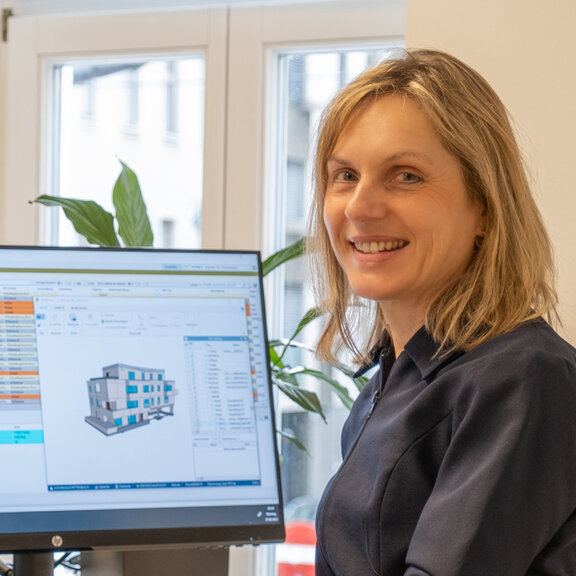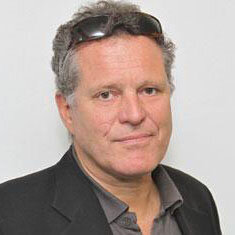BIM interview series part 2
Building information modelling is growing rapidly. It is now not only used in building construction, but also in numerous infrastructure projects. The first companies have already committed themselves to using BIM. We asked experts from Working Group 011 09 "Technical drawing and documentation in the construction industry" which pilot projects paved the way for BIM in Austria and what has been learned so far. The discussion was held with:Azra Dudakovic, BIM Expert and CEO, SIDE GmbH Monika Ilg, Managing Director, ib-data GmbH Peter Kompolschek, Managing Director, Kompolschek Architecture Office | Chair of Committee 011 "General building construction” Stefan Pölzl, BIM and IT Coordinator, ASFINAG Bau Management GmbH
BIM projects – from tunnels to skyscrapers
Austrian Standards: Which pilot projects have been implemented with BIM in Austria? What were your experiences with it?
Stefan Pölzl: Four projects underwent their pilot phase from 2016 to 2019 with us using BIM – a motorway maintenance project, a bridge construction project, standardisation of WC facilities at motorway service areas and the fourth, largest project was (is) the construction of the second bore in the Karawanks Tunnel. This project involved cooperating with the Slovenia motorway operator DARS.We also have numerous other projects in which we are piloting particular aspects such as sustainability (namely determining the carbon footprints). An example of a current large-scale project which we are implementing right from the start with BIM is the safety upgrade of the S 31 in Burgenland. It is currently in the submission phase. A 26, Phase 2 of the Linz bypass was also planned completely using BIM, meaning there are no traditional 2D plans for it. Since 2019 it has been mandatory for all new buildings to be implemented with BIM.
Peter Kompolschek: The main pilot projects I am familiar with from experience are infrastructure projects from the national rail operator ÖBB. Integrating BIM with GIS, i.e. with the second data model for infrastructure, is a challenge. How is data entered into BIM and how does it flow back into GIS? We want to generate long-term databases for construction invoicing and documentation.
Azra Dudakovic: For example, we have implemented a large-scale BIM project with illwerke vkw in Vorarlberg. A hall of residence for apprentices in Montafon, which is being managed with BIM, even had an AR groundbreaking ceremony – in other words, a virtual groundbreaking with augmented reality. The building could therefore be made more tangible for clients than with 2D plans.
Visualisations as a by-product of BIM are now more sophisticated than two or three years ago. The ÖAMTC headquarters in Vienna were planned using BIM and the Austria Tower in Vienna is also a pilot project for BIM. The complex façade and the planning variants could be significantly better represented using 3D planning tools than in conventional 2D plans. However, less complex projects, such as residential buildings, also benefit from processing with BIM thanks to integrated processes and the consistent transfer of information as well as the efficient use of information.
Lessons learnt from BIM projects
Austrian Standards: What conclusions can be drawn from BIM projects?
Monika Ilg: To be able to use BIM in real-life applications, the actual data from the execution must be implemented in the model. Everything now runs seamlessly if you make use of the open interfaces. However, almost everyone has had some involvement with BIM, if you'll forgive the exaggeration. And if you now want to merge the data from every stakeholder – from planners and architects to the construction firms and operators – standards are required.
Peter Kompolschek: Naturally there are still a few people who are only able to read and write 2D plans and don't even know where to begin with 3D models. We still have traditional specifications in building projects. An important learning for me is that more and more companies – including smaller companies – are prepared to use BIM.
At the moment, we are trying to find structures such that construction firms and planners can introduce the relevant information into the models and that we are ultimately able to create a valid as-built model with all the information which we need for operation, maintenance and repair.
BIM coordination as a new role
Austrian Standards: What role does BIM qualification play?
Stefan Pölzl: A BIM overall coordinator is a tender requirement for all of our projects BIM overall coordination is a meaningful interface between the client and contractor.
Azra Dudakovic: The commitment and acceptance of every project stakeholder is definitely required. The coordination role is undoubtedly the most important role in a BIM project because the coordinator is the point of contact for every stakeholder and has to undertake an enhanced version of planning coordination. It is an additional role which you actually would no longer need in future if everyone knew what they were talking about and how the processes go.
Ist CEO bei BIM Consulting Unternehmen SIDE GmbH, wo sie Kunden in der strategischen und operativen Implementierung der Bauinformationstechnologien berät und unterstützt. Die Reise in die Digitalisierung der Baubranche begann sie davor bei der STRABAG AG, wo sie fünf Jahre lang bei den BIM-Entwicklungen im Konzern mitwirkte. Vor ihrem Umzug nach Wien koordinierte sie Forschungsprojekte am Institut für Architektur an der Sarajevo Universität und war parallel in der Architekturplanung tätig.

Ist Geschäftsführerin der ib-data GmbH, Hersteller der ABK-Bausoftware. Seit 2018 ist sie Vorsitzende der Arbeitsgruppe ÖNORM A 2063-1 und 2 und wirkt in weiteren Standardisierungsgremien zu den Themen BIM, Ausschreibung, Kalkulation, Abrechnung und Kostenmanagement mit (ÖNORM B 2061, ÖNORM A 6241-2, ÖNORM B 1801-1).

Diplomingenieur für Architektur an der TU Graz, eigenes Architekturbüro seit 2000, Lehrender an der FH Joanneum für Revitalisierung, Projektmanagement und Lebenszyklus von 2011 bis 2018. Dort Entwicklung eines BIM Curriculums, Diverse Konsulentenaufträge für BIM bezogene Aufgabenstellungen im In- und Ausland. Zahlreiche Wohn- und Gesundheitsbauten, darunter Revitalisierung des ältesten Bauteils des LKH Villach. Seit 2014 European BIM Group – Delegierter Österreichs.

Has worked as an expert BIM and IT coordinator since February 2021. His duties include advancing the BIM agendas, supporting BIM projects, optimising the construction process by means of digitalisation aspects and creating and providing centralised, networked and end-to-end data in ASFINAG. He is also a member of working groups (Austrian Standards, ÖIAV, ÖBV, FSV, etc.) on the topics of BIM and digitalisation.



